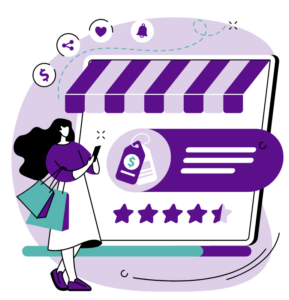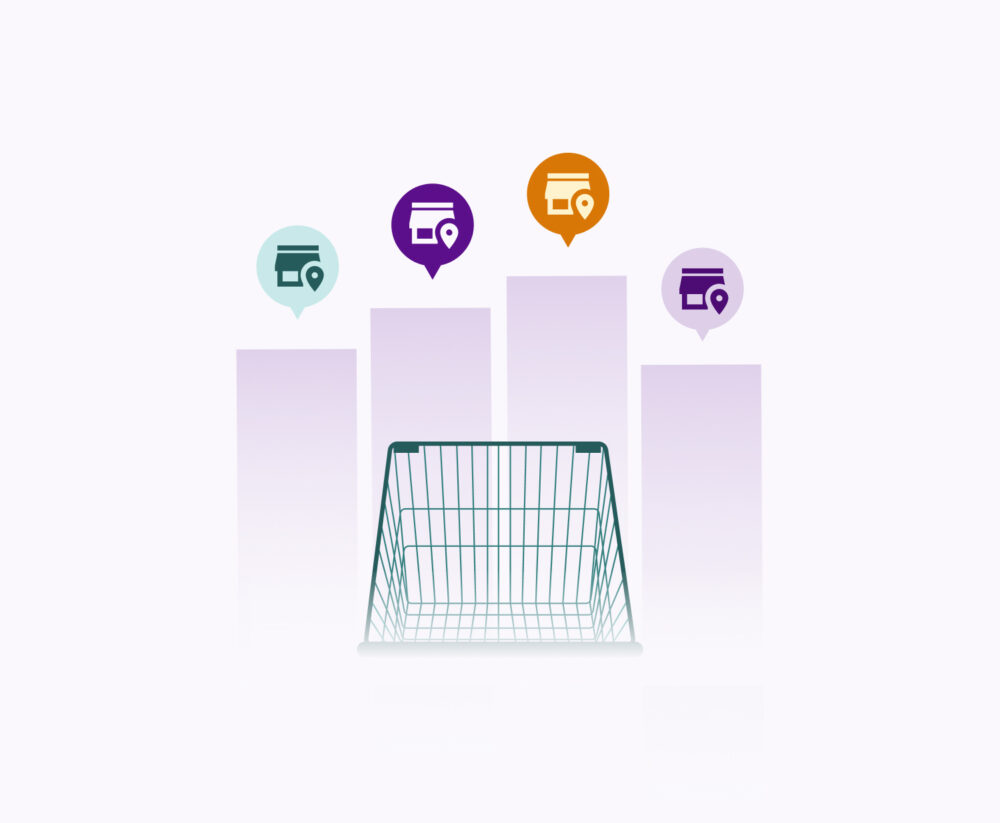How Retail Media boosts your digital presence
Retail Media is becoming more and more noticeable in the digital market.. This system of advertising on retail websites and web applications has become the third wave of advertising. But how did it emerge and how can we use retail media to increase our digital presence?
A practice driven by the pandemic and cookies
Looking back, retail media found its biggest trigger in the COVID-19 pandemic. E-commerce was boosted by the lock-downs and made consumers feel more comfortable shopping from home. Retailer websites and marketplaces have seen increased sales and the need to leverage their products over the competition.
Moreover, the new third-party cookie removal policy has made it necessary to seek new strategies for obtaining consumer information within the vast digital market. Here, data owners play an important role and how the audience is segmented based on their purchasing decisions. This information belongs to the retailers, but it can also be shared through systems for creating sponsored ads targeted at those who are interested in them.
Retail Media as the future of paid marketing
Now that we understand the origins of this advertising practice, it’s important to grasp why it’s necessary to make the most of it.
Incorporating a retail media policy into your marketing strategy not only helps increase sales but also enhances the advertising return on investment for the business. One successful case of this implementation is LG, which saw its return on ad spend (ROAS) multiplied thanks to audiences from PcComponentes and Google Ads.
Retail Media promotes less intrusive and more personalized advertising for consumers, tailored to their search criteria.. This segmentation enables companies to focus their efforts on more profitable campaigns and provides retailers with increased advertising revenue. Analysts agree that we are facing the future of paid marketing, but what are the three factors supporting this claim?

1. Access to first-party data
One of the aspects that retail media relies on is data clean rooms. Following the disappearance of third-party cookie usage, there was a growing need for a system that could analyze and segment data beyond the brand’s own systems.
Clean rooms are a database containing first-party data, the references that the company obtains firsthand through its own sources (such as its website, CRM, or contact center). This information consists of data about consumer preferences, behaviour with your brand, or their experience in the online environment.
First-party information is encrypted and then exchanged, through a series of rules, with data from the provider (username, language, payment method, or products in the cart). The goal is to obtain aggregated information about consumers in common that companies may have.
These databases are secure and protected, storing anonymous information to comply with privacy regulations. Additionally, they are complemented by walled gardens, a type of data clean room that helps to hide users among a multitude of consumers. This nullifies the possibility of identifying their data at the user level and groups them based on common attributes.. Thanks to the combination of both, we can operate with third-party data without violating cookie regulations.
There are two versions: media clean rooms (Google Ads or Amazon Marketing would be two examples) and partner clean rooms, which are the convergence of data between a publisher and an advertiser. This information, even if it’s not personal, helps to segment the audience and stores data about consumer impressions, views, or interactions.
On another hand, proprietary clean rooms are also being created with information from various channels that encrypt data about sales processes and serve as a flow to retail media.
2. The collaborative nature of the retail sector
Thanks to the nature of retail media and the collaborations established between retailers and brands, there are certain synergies in the physical world. By storing information in the retail sector, which includes purchasing habits and data related to stock, two worlds such as marketing and sales can be merged. This helps reduce friction between advertising and the consumer. Marketing professionals use data from retail media to align with the sales department and refine strategies that drive the product forward.
Thanks to clean rooms, the information generated by sales and that of the media can be leveraged to make the most appropriate decisions in less time. This is where the need to compile information into a large system comes in so that we can make the best business decisions. Through a tool that integrates Retail Media Monitoring, information leakage is minimized and a system that covers the entire sales funnel is created. This way, the advertising analysis of retailers is combined with data optimization to make decisions that properly address demand.
3. Potential increase in Return on Advertising Spend (ROAS)
As we’ve discussed, retail media helps boost the company’s ROAS. This system encourages strategies focused on increasing return on investment due to individual ad segmentation. This allows for the creation of campaigns targeted at specific groups and translates into a reduction in the business’s advertising expenditure.
The increase is achieved because it connects with the customer at the moment they are closest to making a purchase. The buyer is in the category where they want to convert, and retail media enhances their conversion through better audience segmentation.
It’s important to enhance ROAS because, thanks to this metric, we can determine if we achieve the expected results and see how competitors respond to market movements.
A future open to multiple possibilities
What is clear is that the future of retail media is still unwritten. Data supports its good performance in terms of results and returns on investment. However, there is still much to contribute to the retail sector to enhance this practice and achieve the greatest performance.
Thanks to tools like flipflow, which monitor retail media,new marketing campaigns can be propelled and innovation in different advertising formats can be achieved. Data accuracy and segmentation are part of the future of the sector and lead to better conversion and optimization of marketing and sales strategies. Additionally, with technological advancements in big data and the implementation of new processing systems, measurement will become more sophisticated.
As an advertiser, thanks to retail media, you will increase your digital presence, reach your desired audience much more precisely, and achieve superior results with appropriate strategy and measurement.



